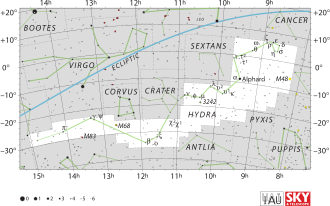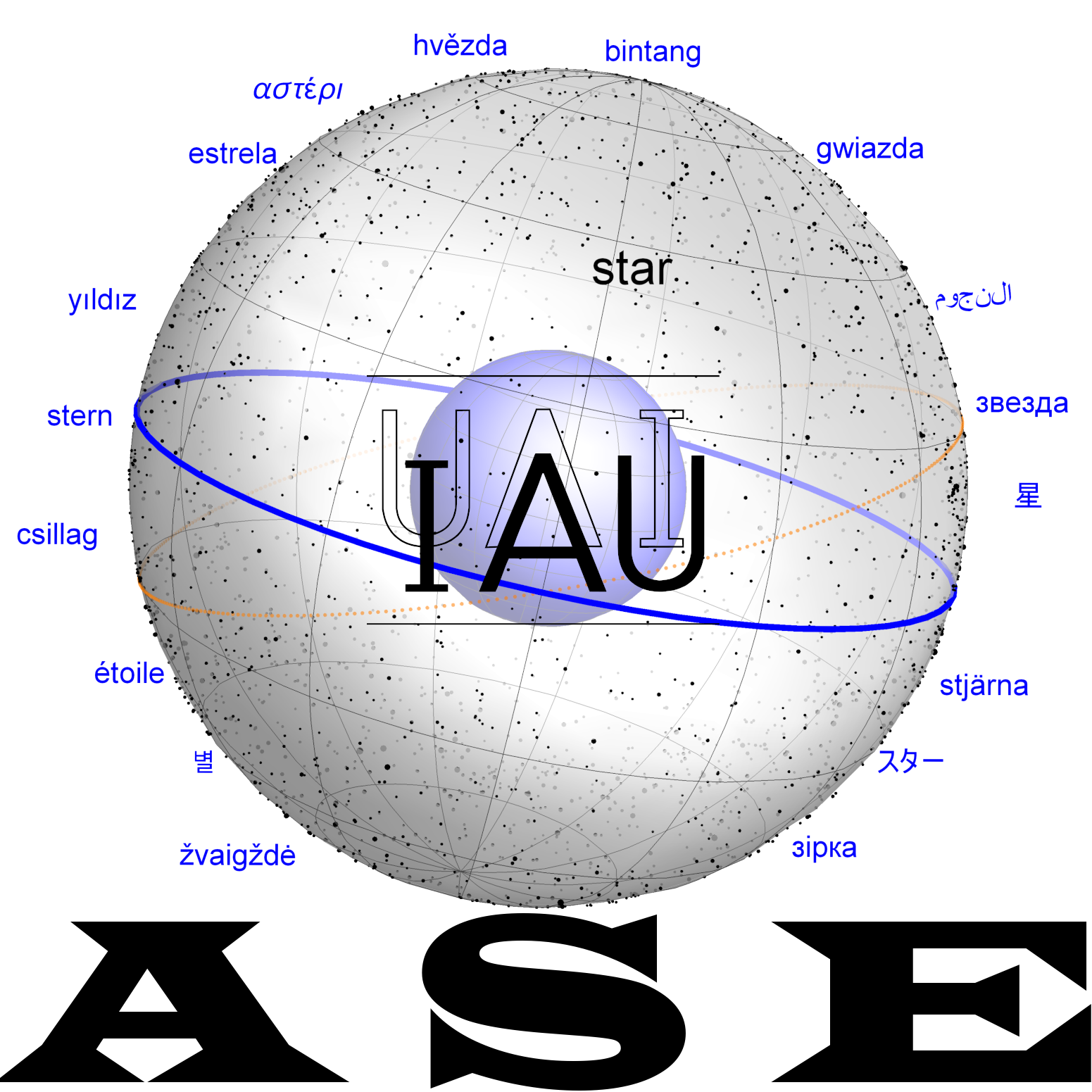Hydra: Difference between revisions
No edit summary |
No edit summary |
||
| Line 1: | Line 1: | ||
[[File:Hydra IAU.svg|alt=IAU Hydra chart|thumb|IAU Hydra chart]] |
[[File:Hydra IAU.svg|alt=IAU Hydra chart|thumb|IAU Hydra chart]] |
||
One of the [[:Category:88_IAU-Constellations|88 IAU constellations]]. The name "Hydra" refers to a watersnake from Greek mythology |
One of the [[:Category:88_IAU-Constellations|88 IAU constellations]]. The name "Hydra" refers to a watersnake from Greek mythology. Still, the underlying constellation originally referred to a Babylonian creature that consisted of a dog-headed snake with wings, the [[MUŠ]]. |
||
==Etymology and History== |
==Etymology and History== |
||
The Greek constellation of the Water Snake is a derivative of the Babylonian constellation of the MUŠ-Dragon, a dog-headed creature with the body of a gigantic snake with front legs and wings. |
The Greek constellation of the Water Snake is a derivative of the Babylonian constellation of the MUŠ-Dragon, a dog-headed creature with the body of a gigantic snake with front legs and wings. |
||
=== Origin of Constellation === |
=== Origin of Constellation === |
||
The Babylonian constellation is mentioned as early as 2nd millennium BCE; it occurs in lexical texts and texts of the Three Stars Each-genre. It is also mentioned in the first list (uranology) of MUL.APIN, where the Raven (or Crow) is mentioned at the tip of tail of the huge creature in the sky. |
|||
The Babylonian constellation is mentioned ... |
|||
Aratus |
==== Aratus ==== |
||
The Greek poet Aratus has many Babylonian references; some of them hidden. For him, this constellation is a (Greek) watersnake. |
|||
==== Hipparchus ==== |
|||
| ⚫ | |||
The mathematical astronomer mentions this constellation rising and setting. |
|||
* The first star rising is , |
|||
| ⚫ | |||
=== Almagest === |
=== Almagest === |
||
Revision as of 16:51, 4 March 2025
One of the 88 IAU constellations. The name "Hydra" refers to a watersnake from Greek mythology. Still, the underlying constellation originally referred to a Babylonian creature that consisted of a dog-headed snake with wings, the MUŠ.
Etymology and History
The Greek constellation of the Water Snake is a derivative of the Babylonian constellation of the MUŠ-Dragon, a dog-headed creature with the body of a gigantic snake with front legs and wings.
Origin of Constellation
The Babylonian constellation is mentioned as early as 2nd millennium BCE; it occurs in lexical texts and texts of the Three Stars Each-genre. It is also mentioned in the first list (uranology) of MUL.APIN, where the Raven (or Crow) is mentioned at the tip of tail of the huge creature in the sky.
Aratus
The Greek poet Aratus has many Babylonian references; some of them hidden. For him, this constellation is a (Greek) watersnake.
Hipparchus
The mathematical astronomer mentions this constellation rising and setting.
- The first star rising is ,
- the last star rising is the one at the tip of the tail (ὁ ἐν ἄκρᾳ τῇ οὐρᾷ)
Almagest
Transfer and Transformation of the Constellation
Mythology
Greek/ Greco-Roman folklore
Babylonian belief
IAU WGSN
The star pi Hydrae is very important in history as it is one of the keywitnesses for transfer from Hipparchus to Ptolemy.
- name in Hipparchus: ὁ ἐν ἄκρᾳ τῇ οὐρᾷ (the one at the farthest point of the tail)
- name in the Almagest: ὁ ἐπ᾽ἄκρας τῆς οὐρᾶς (the one at the end of the tail)
The Greek term ἄκρᾳ can be translated as "at the farthest point" or "at the end" (or "hightest" which doesn't apply here).








